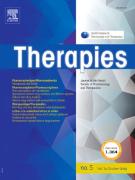Impact of the vaccination against SARS-CoV-2 campaign on disproportionality indicator from the WHO pharmacovigilance database: A competition bias study from case/non-case analysis - 07/04/24

This article has been published in an issue click here to access
Summary |
Introduction |
The coronavirus disease 2019 (COVID-19) vaccination campaign has resulted in numerous pharmacovigilance's safety reports which were recorded in the World Health Organization (WHO) pharmacovigilance database (VigiBase) and represent in July 2022 more than 10% of cases recorded. The information component (IC) is a statistical disproportionality measure based on the observed and expected numbers of case reports. A positive value of the lower endpoint of a 95% credibility interval for the information component (IC0.25) suggests a possible causal relationship between the drug and the adverse reaction. This study aimed to evaluate the impact of the wave of COVID-19 vaccines safety declarations on IC0.25 from Vigilyze and thus illustrate with a concrete example the competition bias.
Methods |
We arbitrarily selected 21 adverse drug reactions using Medical Dictionary for Regulatory Activities (MedDRA) preferred terms (PTs), divided in two types: PTs known to be related to COVID-19 vaccines (“expected”) and others (type “unexpected”). Data were extracted from VigiLyze. We created two groups: V+ (the full database, including COVID-19 vaccines reports) and V− (the same extraction without COVID-19 vaccine reports). IC0.25 was recomputed for the group V− and we compared the positive signal evolution in the two settings of selection (V+ and V− groups).
Results |
The number of positive potential signals was significantly different in the groups V+ and V− for IC0.25. We observed that most of the “unexpected” PTs lost potential signal after the withdrawal of COVID-19 reports. On the contrary, the majority of ‘expected’ PTs had potential new signals after the withdrawal of COVID-19 reports.
Discussion |
This study is one of the first to evaluate the effect of COVID-19 vaccines reporting on Automated Signal Detection of Pharmacovigilance. In this study, we observed that a wave of pharmacovigilance reporting can affect disproportionality estimators such as IC0.25 and then have an impact on automated signal detection; some signals disappear (almost with all PTs related to COVID-19 vaccines) and others appear (mostly with PTs not related to COVID-19 vaccines), illustrating the competition bias.
Conclusion |
We show that a health crisis involving a change in drug use can affect adverse drug reactions reporting and pharmacovigilance databases, leading to competition bias and a change in the disproportionality analyses. For health professionals who use quantitative disproportionality analysis, it is important not only to use the crude values of indicators but also the kind of PTs and the evolution of the signal over time (take into account major events such as crises).
Il testo completo di questo articolo è disponibile in PDF.Keywords : COVID-19 vaccines, Pharmacovigilance, Adverse drug reaction, Disproportionality analysis, Vigibase
Mappa
Benvenuto su EM|consulte, il riferimento dei professionisti della salute.

